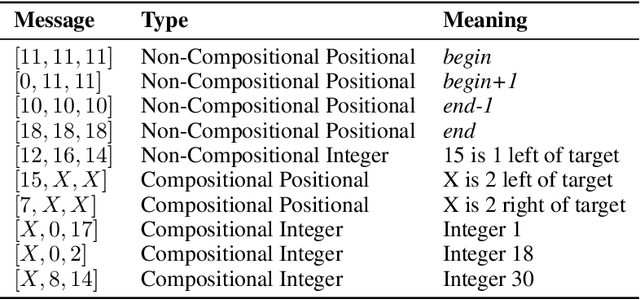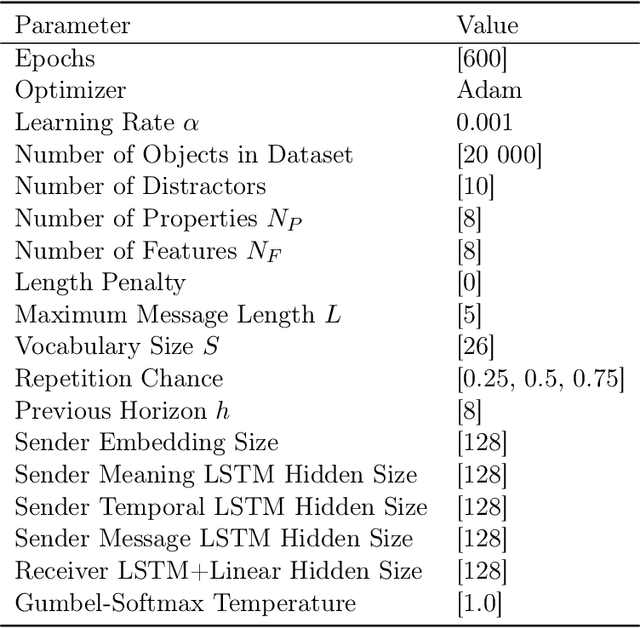Olaf Lipinski
Speaking Your Language: Spatial Relationships in Interpretable Emergent Communication
Jun 11, 2024



Abstract:Effective communication requires the ability to refer to specific parts of an observation in relation to others. While emergent communication literature shows success in developing various language properties, no research has shown the emergence of such positional references. This paper demonstrates how agents can communicate about spatial relationships within their observations. The results indicate that agents can develop a language capable of expressing the relationships between parts of their observation, achieving over 90% accuracy when trained in a referential game which requires such communication. Using a collocation measure, we demonstrate how the agents create such references. This analysis suggests that agents use a mixture of non-compositional and compositional messages to convey spatial relationships. We also show that the emergent language is interpretable by humans. The translation accuracy is tested by communicating with the receiver agent, where the receiver achieves over 78% accuracy using parts of this lexicon, confirming that the interpretation of the emergent language was successful.
On Temporal References in Emergent Communication
Oct 10, 2023



Abstract:As humans, we use linguistic elements referencing time, such as before or tomorrow, to easily share past experiences and future predictions. While temporal aspects of the language have been considered in computational linguistics, no such exploration has been done within the field of emergent communication. We research this gap, providing the first reported temporal vocabulary within emergent communication literature. Our experimental analysis shows that a different agent architecture is sufficient for the natural emergence of temporal references, and that no additional losses are necessary. Our readily transferable architectural insights provide the basis for the incorporation of temporal referencing into other emergent communication environments.
 Add to Chrome
Add to Chrome Add to Firefox
Add to Firefox Add to Edge
Add to Edge